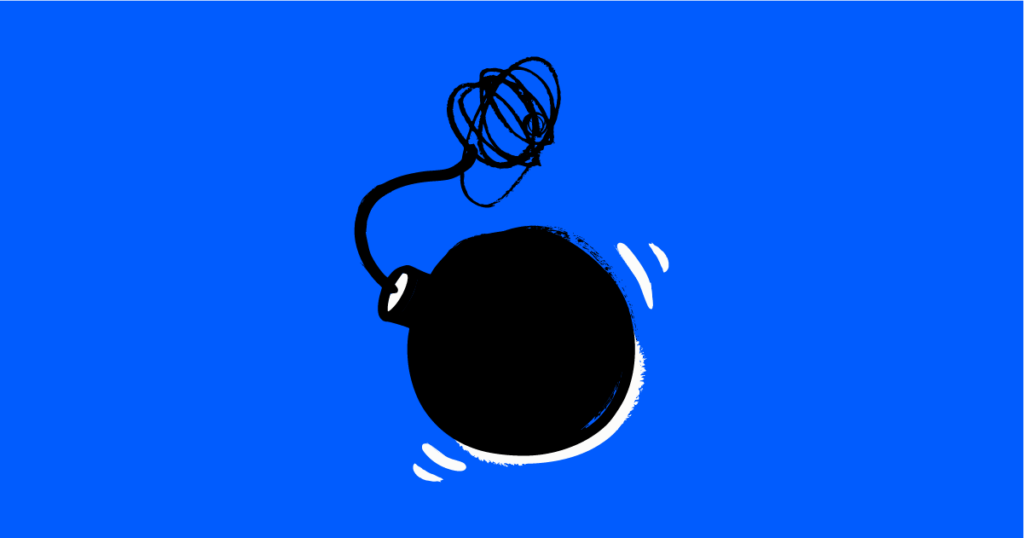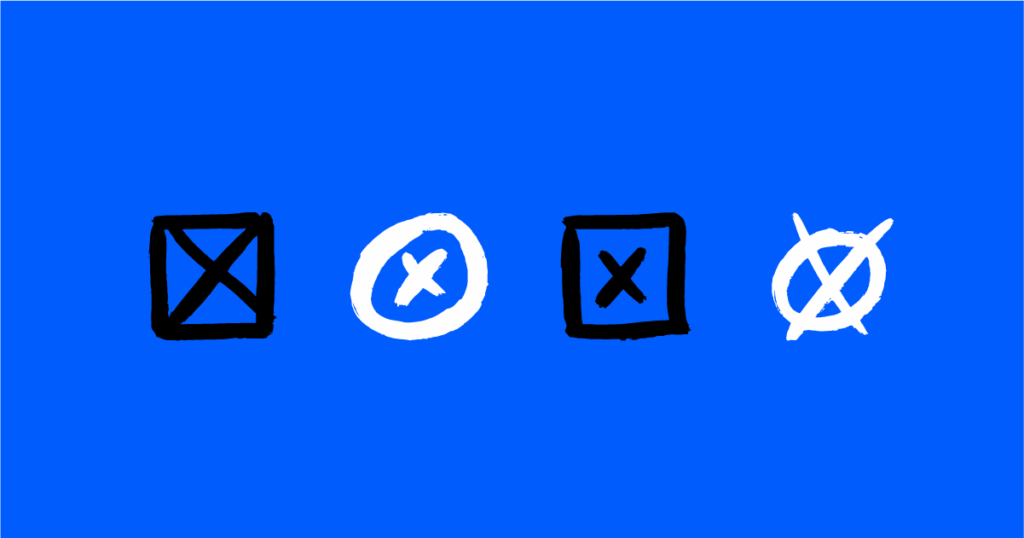What do SaaS businesses that are experiencing hypergrowth have in common? They know how to do design at scale. In fact, 63% of marketers who work for rapidly-growing companies say that creativity and design were the main factors that have led to their business’ growth.
But let’s rewind for a minute. What exactly is hypergrowth? Achieving hypergrowth means maintaining a 40% or higher growth rate for more than one year. While many SaaS businesses initially enjoy rapid growth and early success, the real challenge often lies in sustaining it over time.
One of the most effective ways that companies can break through the growth ceiling is by being able to mass produce creative assets. However, 90% of marketers have said their companies struggle to scale their designs.
So why is creative such a growth blocker? Let’s discuss…
What are the most common creative growth blockers?
Enterprise SaaS businesses have a constant need for collateral, often producing hundreds of assets each month. While conceptualizing design for multiple campaigns might be manageable, many businesses stumble when it comes to implementation. Here’s why:
Workloads get heavy
Creative isn’t just about producing pretty graphics for marketing campaigns. Everything in SaaS relies on quality creative – from product, to sales, to customer success, and everything in between. Workload peaks of a growing business can quickly become unmanageable, with 47% of marketers admitting that they struggle to keep up with demand.
Change is constant
In SaaS, change comes thick and fast. Businesses need to adapt to the evolving needs of their customers, while still keeping up with ever-changing marketing trends. For design teams that are already feeling stretched, a shift in positioning or launching into a new market could mean updating hundreds of existing creative assets. 47% of marketers have said they struggle with maintaining processes and guidelines. As a result, growth can actually be halted, rather than accelerated.
Resources are limited
In-house creatives clearly have their plates full. When resources are limited, businesses often outsource to freelancers or traditional design agencies in a bid to tackle the endless list of creative tasks. However, there are challenges that come with this too.
Traditional design agency fees aren’t always transparent and can escalate quickly. Businesses can also deal with long turnaround times as well as relentless feedback loops. On the other hand, freelancers can generally deliver projects quickly, but can be unreliable and ultimately have fixed amounts of capacity. 57% of in-house marketers find it difficult to keep up with quality when producing creative at scale. Adopting a patchwork approach to solve creative challenges can end up further jeopardizing brand consistency.
How successful SaaS businesses do design at scale
Growth doesn’t happen by chance. Design at scale should be consistent, easily reproduced for different platforms or media, and affordable to version over time. This requires a proven framework; strategies and systems that produce measurable results.
As “creative” as design is, data and processes should always underpin output. Here are some of the main ways enterprise businesses use data-driven learnings to kick their creative into high gear.
Content Auditing
There’s no space for guesswork when dealing with an extensive library of creative assets. SaaS businesses that are nailing design at scale know what’s working because they’ve made content auditing a crucial element of their marketing strategy. By understanding the perceived quality of their existing assets, businesses can minimize revisions and improve impact over time.
Templating Assets
When a business knows what creative resonates with their target audience, they can leverage their existing work to streamline processes. One of the most effective ways to do this is by templating assets. By creating a standard asset type for each platform, channel or campaign, businesses can increase their creative output immediately. In fact, companies that use templates for content are five times less likely to struggle with managing design at scale.
However, there isn’t a one-size-fits-all formula to successfully achieve design at scale. Every enterprise SaaS business has its own unique goals. Therefore it’s vital to collaborate with experts who can deliver a customized growth framework to tackle a business’ biggest design challenges.
A smarter way to scale creative
Hypergrowth can only happen when creative is at the races. That’s why we at Perpetual have developed a model that gives rapidly-growing SaaS businesses creative certainty – SmarterCreative. We understand the profound impact that creative has on growth. Unlike traditional agencies and freelancers, we use a data-driven approach to efficiently create and refine high-quality creative assets, reducing costs and improving results over time. So in-house teams have the breathing space they need to conceptualize and plan projects effectively.
How Armis achieved a 400% increase in creative output
Armis, a main player in the cybersecurity industry, secured Series B funding in 2020, which fast-tracked their journey from a start-up to an enterprise business. Until then, Armis had employed a mix of internal creatives, freelancers, and local agencies to manage the business’ creative needs. However, this split approach resulted in internal cohesion challenges, duplicated efforts, and suboptimal creative outcomes.
Focusing on short-term needs had meant that critical asset types were inconsistent and had varying quality levels. The team needed a robust asset library in order to demonstrate visual maturity and reflect that of a business on the highway to hypergrowth. So Armis decided to partner with Perpetual to overcome these challenges in a bid to scale creative.
Using our SmarterCreative approach, we helped Armis regain control of output;
- By highlighting all of the creative that was currently being published, we compiled all of the relevant assets.
- We evaluated each asset type in terms of volume, reach, and quality
- Based on this evaluation, we could project creative requirements based on commercial goals in a given period.
With this understanding and a clear picture of the future requirements of the creative department, Armis were able to effectively restructure based on their own projected needs.
The result? Armis experienced a 400% increase in creative output without adding headcount, halved the cost per asset within a year, and optimized the internal creative team, reducing its size by 60%. Armis has grown its Annual Recurring Revenue from $1 million to $200 million in under five years. Hypergrowth if ever we’ve seen it.
When it comes to SaaS, growth is one thing – sustained growth is another thing entirely. Having the ability to scale design is the key to achieving hypergrowth status. So let’s talk about how




